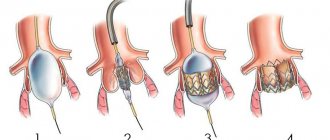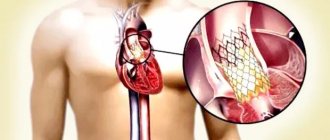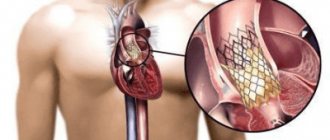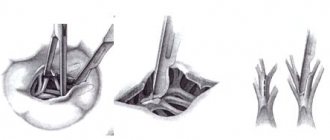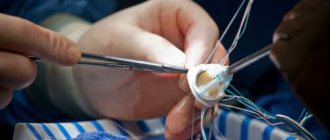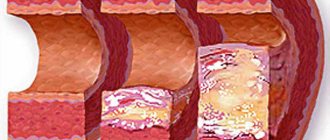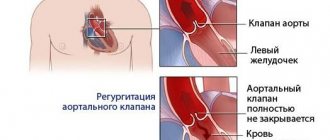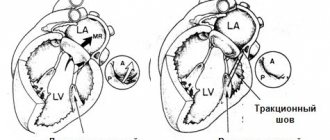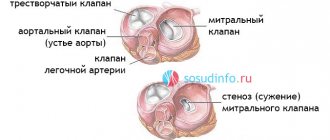Sign up
+7
Cardiac surgery is one of the most difficult operations. The aortic valve replacement uses a miniature part created in a high-tech laboratory. Installing such a prosthesis is a painstaking and extremely responsible task, which only an experienced surgeon can handle. The operation requires serious preparation, and the recovery period also requires effort on the part of the patient.
When is valve replacement required?
The heart is responsible for delivering blood and oxygen to all tissues of the body. Any disturbances in the functioning of the organ inevitably have a negative effect on the body and require treatment. Often the problem can be solved conservatively, that is, without resorting to invasive intervention. But this does not always happen, and in some cases surgical replacement of the aortic valve cannot be avoided. The main problems of the aortic valve include:
- Congenital and acquired defects. This category includes any changes that interfere with normal blood flow and increase the workload of the heart.
- Valve stenosis, in which the ejection of blood into the aorta is impeded.
- Rheumatic diseases, streptococcal infection.
- Aneurysm, aortic dissection.
- Change in shape, valve damage, calcification, sagging valves.
- The valve does not close tightly, blood flows in the opposite direction.
- Inflammation.
Make an appointment with a specialist without queues, at a convenient time
Sign up
+7
When the pathology is at an early stage of development, it can often be eliminated without surgery. In serious cases, when medications cannot solve the problem, surgery is used. An artificial valve made in the laboratory, as well as an element of the patient’s own tissues, can be installed. The second option is cheaper, since you do not need to purchase an expensive prosthesis.
Indications and contraindications
Indications for the procedure are heart failure in combination with impaired valve function. Signs of such a problem are:
- swelling of the limbs. Most often the legs swell, but in some cases the same phenomenon occurs in the thighs, genitals, and abdomen;
- difficulty breathing. As a rule, this is shortness of breath, sometimes there may be a lack of air, pain when breathing in the chest area;
- pressing and throbbing pain in the chest;
- blue lips, gray skin color, “bruises” under the eyes;
- worsening of symptoms with physical activity.
Such signs indicate a developing disease; in the first stages, the problem may not manifest itself at all. Based on the patient’s complaints, the doctor prescribes several types of diagnostics, then clarifies the diagnosis. If a serious disorder in the mitral valve is confirmed, the type of surgical intervention is discussed.
Reconstruction of the heart is a difficult task, so it is carried out only if other methods do not help the patient. To prescribe plastic surgery, the attending doctor prescribes a series of examinations to the patient to ensure the need for such manipulations. For mild forms of the disease, drug treatment is most often used. Also, other types of therapy are sought if the patient has severe kidney and liver diseases, acute infections, pneumonia, gastric ulcers, diabetes mellitus, poor blood clotting, and sepsis.
Mitral repair is prohibited for people who have just suffered a stroke or extensive myocardial infarction.
If mitral repair is necessary, doctors weigh all the risks. Even against the background of some contraindications, surgery can be performed if it is intended to save the patient. Before prescribing this procedure, they must undergo training.
What types of valves are there?
Three types of elements can be used to replace an unhealthy valve:
- Biological. They suggest recreating a new valve from the patient’s own tissues. Such a valve will last about 10-15 years, after which the operation will need to be repeated. This is due to the gradual wear and tear of the element and its inevitable degenerative changes. With this approach, anticoagulants need to be taken only for the first six months after surgery.
- Mechanical. Such a valve is manufactured in a laboratory and requires constant use of anticoagulants (for the entire life of the patient). Such prostheses are installed mainly in patients who have not reached old age.
- Donor. This option is used only in extreme cases, as there is a risk of rejection of donor tissue by the patient's body. The outcome of such an operation is difficult to predict, and the possibility of complications cannot be excluded. In order for the valve to take root, doctors need to carry out therapy that suppresses the recipient’s immunity so that the immune system does not begin to fight the foreign element. As with the installation of an artificial valve, the patient is advised to take lifelong anticoagulants to exclude the possibility of thrombus formation.
- Available: doctor’s appointment from 1500 rubles
- Convenient: open daily from 8:00 to 21:00
- Quickly: we will carry out all the diagnostics at the first appointment
- Complete: has all the necessary equipment
Method of mitral heart valve replacement, effectiveness of the operation and prognosis
Mitral valve replacement is an operation to replace one (several) valves with a prosthesis (biological and artificial). The procedure significantly prolongs the life of patients with heart pathologies and minimizes the manifestation of symptoms of the disease. This is a good alternative to heart transplant surgery instead of the long wait for a donor.
A defective bicuspid heart valve must be replaced, the reason why is calcification, heart failure, fibrous condition of the valves. Cardioplegia or AIC is used, during which long-lasting mechanical (tissue) valves are installed. They can reduce the risk of developing thromboembolism and endocarditis.
Varieties
The most durable prosthesis with excellent survival rate and a low threshold for the development of infection is the pulmonary valve, the installation of which is often performed in young patients aged 20-25 years, who can easily survive a complex operation.
In older patients, surgeons often install the patient's own heart valve instead of the aortic one.
Substitutes used:
- disc prostheses;
- hinged bicuspid dentures;
- from pork heart with a high risk of thrombosis.
8
24/7
The disadvantage of outdated disc models is the high risk of complications: ischemic stroke, femoral thrombosis and pulmonary embolism, thrombus formation in the valve leaflets.
- Mechanical valves, made of synthetic semi-circular structures, move in one direction, are durable, strong and wear-resistant. Patients after surgery require lifelong anticoagulant therapy.
- Biological artificial models made from pig hearts wear out quickly. The service life does not exceed 12 years, so for elderly patients after 65 years of age, the best prosthetic option is to install their own pulmonary valve. The risk of developing re-inflammation remains.
Manufacturers guarantee a service life of mechanical valves of up to 15 years, although they may wear out faster. Often, after 7-8 years, patients need repeat surgery. In the case of mitral valve replacement, the price depends on the type of prosthesis.
Indications for prosthetics
Mitral valve replacement is associated with certain risks and is considered a technically difficult procedure. Doctors of various profiles, most often cardiac surgeons, take part in it. With a defect, a large load is placed on the heart, which can complicate the surgical procedure.
Mitral valve replacement is fraught with complications, although to this day the operation remains in demand when drug treatment is ineffective.
Main indications for prosthetics:
- mitral valve insufficiency;
- fibrosclerosis;
- stenosis;
- deposition of calcium salts;
- wrinkling or shortening of the gate;
- narrowing of the valve in the hole;
- impossibility of eliminating the defect by cutting the valves;
- sclerosis of the tendinous chord.
Surgical correction is required when there are structural changes in the mitral part of the valve, when blood flow is clearly impaired, or when blood flows in only one direction.
Contraindications
Mitral valve replacement may become dangerous and ineffective if the patient has:
- blood clotting disorder;
- chronic diseases of internal organs;
- severe form of heart disease.
Preparing for surgery
The preparatory stage before mitral valve replacement consists of examining the patient:
- chest x-ray;
- general urine analysis;
- blood test for biochemistry;
- blood clotting test;
- Ultrasound of the heart and blood vessels;
- electrocardiography;
- coronary angiography for medical reasons.
Patients need to consult a therapist, cardiologist, and anesthesiologist.
The main preparatory procedures are taking a contrast shower and the last meal 8 hours before surgery. You need to get a good night's sleep and calm down.
Prosthetic methods
Mitral valve replacement on the heart is performed using an open or endovascular method.
Open intervention
Open surgery under anesthesia (anesthesia) involves the surgeon working on the anterior surface of the chest with dissection of the sternum in the longitudinal direction, opening the pericardial cavity.
The patient is connected to a heart-lung machine to disconnect the valve from the systemic circulation. An implant is installed on a non-functioning heart to avoid myocardial hypoxia. Also, throughout the entire procedure, the affected organ is treated with cold saline solution.
The open method of surgery is highly traumatic, the recovery period is long.
When suturing the surgical wound, sensors can be applied for temporary cardiac stimulation, and wire sutures can be applied to the edges of the sternum for rapid tissue fusion.
8
24/7
Endovascular intervention
The technique does not require anesthesia. It is performed on a beating heart and without connecting a heart-lung machine. A catheter is inserted into the heart cavity and an implanted valve is inserted. The process of implanting a valve into a damaged area is often quick and easy, since the implant is quite flexible and plastic. Additionally, if necessary, stenting of the coronary vessels is performed.
The endovascular method is minimally invasive. If the vessels and the mitral valve are simultaneously affected, and patients have atherosclerosis, then doctors can eliminate 2-3 pathologies at once in one operation.
Inaccessible method
The method is minimally invasive, since an operation is performed to replace the mitral valve with an incision of the anterior chest wall of only 2.5 cm. A catheter is inserted into the affected area of the valve through the projection of the apex of the heart. Then, by analogy, as with the endovascular technique, the surgeon performs the implantation of the implant.
The choice of type of prosthesis and technique directly depends on the technical equipment of the clinic, the patient’s well-being, and existing contraindications. Open intervention on the mitral valve is considered the most dangerous and traumatic. The endovascular technique is more advanced, but expensive. Although the advantages are obvious, it is allowed to be performed on both young and elderly patients.
For young patients, doctors can offer vulvoplasty as a safe method of mitral valve replacement, reviews of which confirm its effectiveness. The operation is carried out without installing an artificial prosthesis, solely due to the expansion of the lumen of the artery of its own valve during surgical manipulations.
Period after surgery
The operated patient is placed in the intensive care unit for a day. If the condition on the second day is satisfactory, then he is transferred to a regular ward.
If the mitral valve replacement surgery was performed in an open manner, daily treatment of the sutures with antiseptics is necessary for 7-10 days. If an endovascular technique was performed, then after 3-4 days the patient goes home.
After the intervention, unpleasant sensations may be observed for a month: burning and chest pain. The open method of surgery leads to nagging pain in the heart area, redness and swelling at the suture sites.
If the wound has festered, you should definitely see a doctor for antiseptic treatment.
The rehabilitation period averages 6-8 months. Additionally, patients are prescribed drug therapy:
- anticoagulants for blood thinning;
- painkillers;
- antibiotics if there is a high probability of wound infection after surgery;
- beta blockers, calcium antagonists;
- ACE inhibitors;
- diuretics if patients have hypertension, angina, arrhythmia.
Blood clotting tests are performed regularly, as is monitoring of INR levels. The examination helps prevent stroke and bleeding, which can be caused by a foreign object in the heart.
Against the background of the operation, the following conditions are not uncommon:
- emotional lability;
- insomnia;
- apathy;
- decreased vision;
- depression.
Installing a prosthesis on the heart necessarily requires a radical revision of lifestyle and nutrition, and giving up bad habits. For the first time after surgery, you should come to see a cardiologist in a month. Donate blood and urine. If the indicators are normal, then the next time you will have to visit the doctor in a year.
It is important to review your diet and exclude fried, smoked, salty and fatty foods. Give preference to vegetables, lean fish and meat.
Mitral valve replacement is a restoration of ventricular function and cardiac contractility, and a reduction in intraventricular pressure.
Even a successfully performed surgical intervention to replace the mitral heart valve does not provide a 100% cure prognosis.
It is worth understanding that even the best dentures are not eternal and have a limited service life. After mitral valve replacement, a repeat operation may be required. That is why it is extremely important to identify malfunctions of the implant in a timely manner, because the individual characteristics of the heart do not always coincide with the artificially installed valve. Reduced pressure inside organs remains in patients for life and requires regular attention from a cardiologist.
8
24/7
What types of operations are used
Aortic valve reconstruction or replacement can be performed in two ways:
- On an open heart.
- Minimally invasive method.
Modern cardiac surgery actively uses methods that make it possible to replace heart valves without cutting the chest. An operation without an opening will cost more than a classic open one. This approach reduces the likelihood of risks and facilitates the recovery period. Access can be through an artery in the shoulder or leg using a catheter. Local or general anesthesia is required, the total time of the operation using a catheter is about one to one and a half hours.
Abdominal surgery with an incision in the chest lasts longer and is cheaper compared to minimally invasive surgery. During valve replacement, the patient is connected to an artificial circulatory system. The risk for the patient is slightly higher than with the endoscopic method, but there is no risk of deformation of the conducting vessels.
Modern techniques are available in clinics in Israel and Germany.
Where are such operations performed?
Mitral plasty is performed only in large regional centers, in cardiology departments of clinics or specialized centers. The cost of such a service is quite high; the price for mitral valve repair depends on the range of work, the qualifications of the surgeon, the status and pricing policy of the clinic.
On average, such an operation will cost $3,500, the cost includes hospital stay, diagnostics, and surgery. Reconstruction services are also offered by clinics in Europe, where such a service will cost an average of 45,000 euros.
Best materials of the month
- Coronaviruses: SARS-CoV-2 (COVID-19)
- Antibiotics for the prevention and treatment of COVID-19: how effective are they?
- The most common "office" diseases
- Does vodka kill coronavirus?
- How to stay alive on our roads?
Postoperative period
The recovery period is the most important stage, which has its own characteristics. For the first time after replacing the valve, physical activity and strong psychological experiences are prohibited. Caution must be exercised for at least three years after the intervention. Professional athletes can return to full training only after six years. Taking anticoagulants prescribed by a doctor is a must. It is also very important to regularly check the condition of the body and monitor for possible concomitant pathologies.
In fact, the valve itself will not affect the patient's future health in any way. If irreversible changes have occurred, the patient needs constant monitoring by a cardiologist.
Recovery after plastic surgery
Heart surgery requires gradual rehabilitation. In the first month after plastic surgery, it is recommended to take very good care of the entire body: give up bad habits, follow the prescribed diet, and avoid stress.
During this period, you need to avoid foods that are too salty, fried, or fatty. Also, drinking plenty of water additionally puts a strain on the cardiovascular system; you should try to drink no more than 1.5 liters of water per day. Alcohol is completely excluded.
It is imperative to undergo routine examinations. The doctor will evaluate the effectiveness of the plastic surgery and the patient’s condition and adjust the treatment. If your health worsens in the postoperative period, this is a reason to call an ambulance or come to an unscheduled appointment. Physical activity should be reduced, sometimes go for leisurely walks, breathe fresh air.
In most cases, such an operation ends successfully for the patient. Over time, all functions of the heart are restored, and the person can return to an active lifestyle, which is confirmed by reviews.
After the first 4 weeks, an examination is scheduled to ensure the success of the procedure. To do this, you need to undergo an ultrasound of the heart, cardiography, urine and blood tests. In the first year after plastic surgery, the patient visits the doctor every month, then twice a year, if there are no complaints.
Drug therapy during the rehabilitation period
A patient who has undergone valve replacement surgery regains strength and gets used to a new lifestyle for 6-12 months. As a rule, a person experiences a surge of strength and improved well-being. Ordinary actions are now performed easily and are not accompanied by fatigue.
During intervention, a valve made of artificial materials or biological tissues is installed. The body reacts to the foreign body by increasing the production of platelets. To avoid thromboembolism, the patient must take anticoagulants - warfarin, clopidogrel.
With a mechanical valve this is a lifelong appointment, with a biological valve it is 3 months. We need constant monitoring of the INR - international normalized ratio (ITI, PTV). Its recommended value is 2.5-3.5. There is a danger of hemorrhage, so it is forbidden to change the dosage of the drug. Only an observing cardiologist can do this.
Drug therapy includes:
- taking anticoagulants;
- antibiotic treatment of rheumatic diseases;
- treatment of arrhythmia, angina pectoris, hypertension;
- taking diuretics.
Important. This will help avoid the main complications of valve replacement - thromboembolism and bacterial endocarditis - inflammation of the heart muscle.
